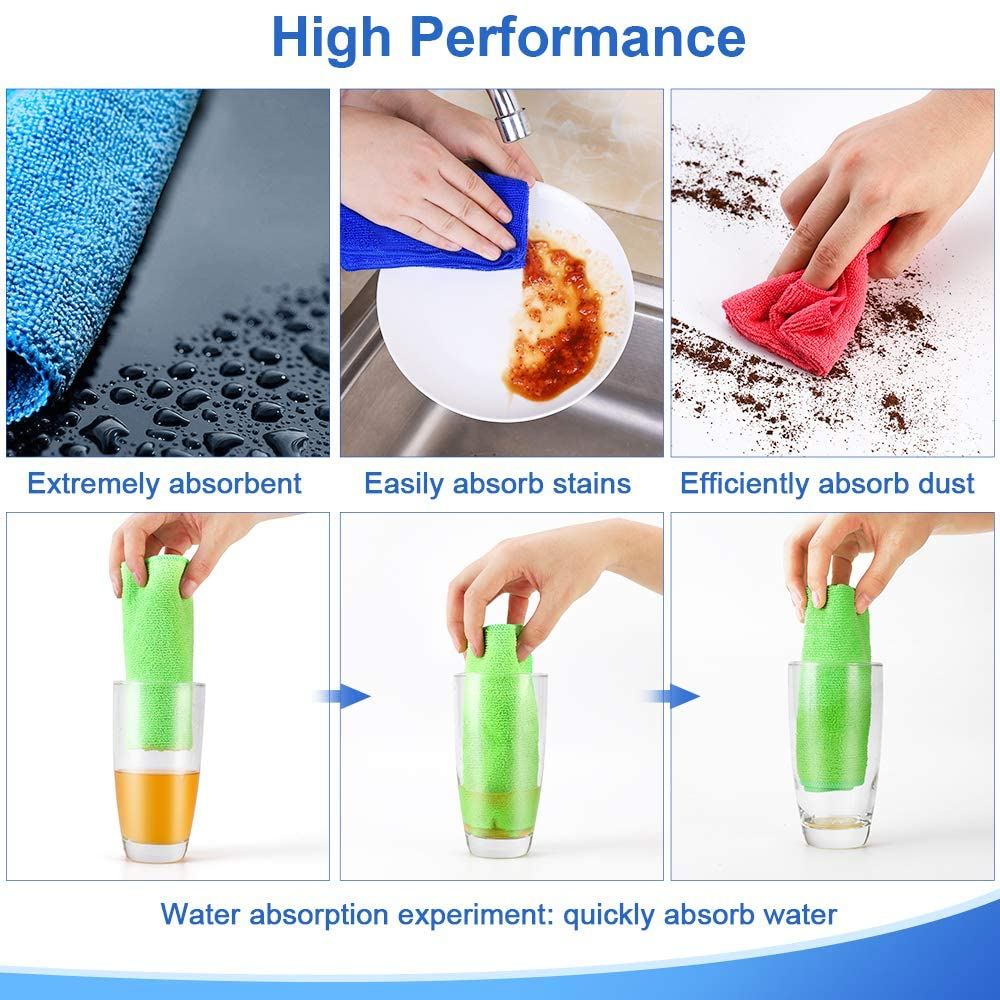Microfiber cloths have revolutionized the way we approach cleaning, offering efficiency and effectiveness that traditional cleaning materials may lack. Whether you’re a seasoned cleaner or just getting started, incorporating these tips into your cleaning routine can make the process easier and more satisfying, leaving your surfaces gleaming and spotless.
1. Choose High-Quality Microfiber Cloths
Investing in high-quality microfiber cloths is essential for achieving optimal cleaning results. Look for cloths with a dense weave and a high blend of polyester and polyamide. Quality microfiber cloths not only pick up more dirt and debris but also last longer, making them a cost-effective choice in the long run.
2. Color Code for Different Areas
Make your cleaning routine more organized by using color-coded microfiber cloths for different areas of your home. Assign specific colors to different tasks, such as blue for glass and mirrors, green for kitchen surfaces, and red for bathroom cleaning. This helps prevent cross-contamination and ensures each cloth is used for its designated purpose.
3. Dampen, Don’t Drench
Microfiber cloths are most effective when slightly damp. Avoid saturating them with cleaning solutions, as excessive moisture can hinder their performance. A light mist or dip in water is often sufficient to activate the microfiber’s cleaning capabilities. This not only saves cleaning solution but also accelerates the drying process.
Microfiber High Loop Towel
4. Use Microfiber Cloths for Dusting
Banish dust with ease by using microfiber cloths for dusting surfaces. The electrostatic charge in microfiber attracts and traps dust particles, preventing them from being redistributed into the air. This makes microfiber cloths an ideal tool for dusting furniture, electronics, and other surfaces around your home.
5. Tackle Stains and Spills Promptly
Microfiber cloths excel at absorbing liquids, making them perfect for addressing spills and stains promptly. Whether it’s a kitchen spill or a pet accident, blot the area with a microfiber cloth to absorb the liquid quickly. This not only helps prevent stains but also minimizes the risk of odors and bacteria buildup.
6. Machine Wash Regularly
Extend the life of your microfiber cloths by washing them regularly. Machine wash the cloths in warm water with a mild detergent, and avoid using fabric softeners, as they can reduce the microfiber’s absorbency. Air-dry or tumble dry on low heat to maintain the cloths’ effectiveness.
Frequently Asked Questions
Q: Can I use microfiber cloths on all surfaces?
A: Microfiber cloths are versatile and safe for most surfaces, including glass, stainless steel, and countertops. However, avoid using them on delicate surfaces like high-gloss finishes or untreated wood, as the microfiber’s texture may cause scratches.
Q: How often should I replace microfiber cloths?
A: The lifespan of microfiber cloths depends on usage and care. Replace them when they show signs of wear and tear, such as fraying edges or a diminished cleaning performance. High-quality microfiber cloths tend to last longer with proper care.
With these tips, you can harness the full potential of microfiber cloths to simplify your cleaning routine. Whether you’re a cleaning enthusiast or looking for ways to make chores more manageable, incorporating microfiber cloths into your arsenal can lead to a more efficient and enjoyable cleaning experience.
Post time: Jun-20-2024


